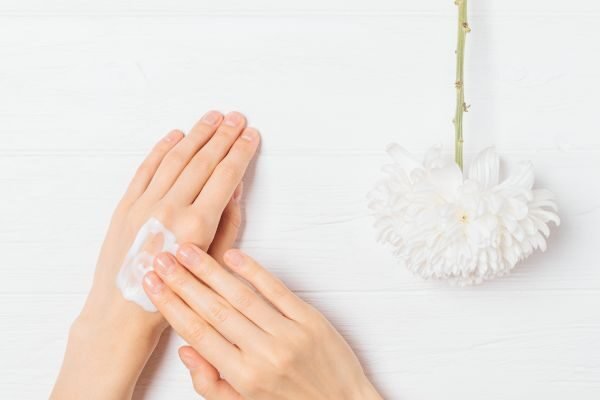目次
過去5年間で、口腔ケアと歯科技術は大きく進歩しましたが、同じ期間に 虫歯の増加未就学児の歯周病、虫歯、その他の歯の問題が観察されています。最近の研究では、お子様が使用する歯ブラシの種類と使用方法が、その後の歯の健康に大きな影響を与える可能性があることが示されています。 口腔の健康口腔内のあらゆる問題を避けることはできませんが、特に幼いうちは、自宅での簡単な歯磨きで、できる限りの予防をすることをお勧めします。お子さんは朝晩2回歯を磨き、毎食後やおやつ後に口をすすいでも、大人になってからも続く深刻な歯の問題(歯垢の蓄積による)を抱えている可能性があります。
電動歯ブラシは、子供の口の中の歯垢除去において、手動歯ブラシよりも優れています。しかし、電気による危険性、価格、使用方法、特定の健康上の懸念、いつから始めたらいいのかわからない、子供に最適な電動歯ブラシが見つからないなど、ご不安な点もあるかと思います。そこで、電動歯ブラシについて知っておくべきことをすべてご紹介します。 子供用電動歯ブラシの選び方、お子様が歯ブラシを使うべき理由、歯ブラシがお子様の口腔の健康を促進する上でどのように役立つかについて説明します。

子供に特別な歯ブラシが必要な理由
大人用の電動歯ブラシを子供に使っても大丈夫でしょうか?答えは簡単です。「いいえ」です。子供の口は小さく、歯茎は敏感で、年齢によっては運動能力がまだ発達段階にあります。お子様には年齢に合わせた手動歯ブラシを使用するのと同じように、電動歯ブラシにも年齢に応じた機能が備わっています。子供用電動歯ブラシには通常、以下の機能が備わっています。
- ヘッドが小さいので、むせることなく狭い場所に届きます。
- デリケートな歯茎を守るための極上の柔らかな毛
- 厚くて滑りにくいグリップなので、小さな手でもしっかりと握れます。
大人用の電動歯ブラシを子供に使用しないでください。歯茎の損傷、不快感、または奥歯の周りの歯垢の蓄積のために早期に歯科医の診察を受けることになる可能性があります。

子供用歯ブラシ:手動歯ブラシと電動歯ブラシ:科学的根拠に基づいた比較
手動歯ブラシも電動歯ブラシも歯をきれいにするのに非常に効果的です。手動歯ブラシの方が安価で、近くのお店で簡単に手に入るのは間違いありません。しかし、歯垢除去に関しては、科学は嘘をつきません。 国際小児歯科ジャーナル(2023) 4週間の期間内に子供に手用歯ブラシと電動歯ブラシを使用した場合の有効性を比較した研究では、メーカーの指示に従って使用した子供用電動歯ブラシは、手用歯ブラシよりも歯垢と歯肉炎の軽減に効果的であることが示されました。また、別の研究では、振動回転式(OR)電動歯ブラシの振動毛が口内の届きにくい部分にも届き、子供の虫歯を予防することが示されました。
1日2回の歯磨き習慣を子供に続けさせるのが難しい場合は、次のアドバイスを検討してください。 アヴィ・ジーニ教授 (DMD、ヘブライ大学ハダッサ歯学部長):「幼い子どもたちは電動歯ブラシが大好きです。」 電動歯ブラシの使用頻度が高まっている理由としては、内蔵タイマー、ライト、歯磨きトラッキングアプリなどが挙げられます。これらの研究結果は、歯科医の推奨とも一致しています。小児歯科医が、臨床的効果と習慣性を挙げ、子どもに電動歯ブラシを推奨するケースが増えているからです。
手動歯ブラシ | 電動歯ブラシ |
1. より安価でアクセスしやすい | より高価で、容易に入手できない |
2. 歯垢除去効果が低い | 歯垢除去に優れています |
3. 3~4ヶ月ごとに交換が必要 | 交換可能なヘッドは3ヶ月ごとに交換する必要がありますが、歯ブラシのモーターは3年から5年持続します。 |
4. 子どもに歯磨きの習慣を身につけさせるのが苦手 | タイマー、ライト、音楽が内蔵されており、子供たちの興味を引きます |
5. 手動歯ブラシでは歯磨きの技術と歯の健康を追跡することはできない | 一部の電動歯ブラシは、口腔の健康状態を監視し、歯磨きのテクニックを向上させるために、歯科追跡アプリと連携することができます。 |
子供に電動歯ブラシを使い始める時期
過去の研究に基づくと、子どもがいつから一人で歯磨きを始められるようになるかについては、明確な見解がありません。子どもは歯ブラシを安全に持ち、歯磨き粉を吐き出すことができるため、3歳頃から電動歯ブラシを導入することを推奨する歯科医もいますが、一方で、未就学児よりも効果的に歯磨きができる6歳以上まで待つことを推奨する歯科医もいます。
おすすめは? 万人向けではありません。一部の子供用電動歯ブラシブランドは、2歳から使える年齢に合わせたデザインを採用しています。幼児(2~4歳)向けの歯ブラシは、非常に柔らかい毛と噛みにくいハンドルを採用し、子供(5~8歳)向けの歯ブラシはタイマーや漫画のテーマで歯磨きのモチベーションを高め、プレティーン(9~12歳)向けの電動歯ブラシには、自立学習や口腔ケアのためのアプリが搭載されています。
あるいは、歯ブラシを落とさずに握れるか、電動歯ブラシに興味があるか、歯磨き粉を飲み込まないようにできるかなど、お子様の発達段階に合わせて選ぶこともできます。

お子様にぴったりの電動歯ブラシの選び方
完璧なものを選ぶ 子供用電動歯ブラシ 次の 3 つの要素から始まります。
- 年齢:子供専用の歯ブラシは常に人気です。ほとんどの歯ブラシメーカーは、製品に推奨使用年齢を明記しています。回転式でも振動式でも、敏感な時期のお子様には歯茎を傷つけないように、柔らかい毛の電動歯ブラシが必要です。
- 歯磨きのニーズ:歯ぐきが敏感なお子様には、優しい音波振動の歯ブラシをお選びください。歯ぐきを刺激することなく、より広い面積を磨きます。お子様が歯列矯正器具を装着している場合は、歯ブラシヘッドが歯列矯正器具に対応しているか、圧力センサーが付いているかをご確認ください。お子様に最適な歯ブラシがわからない場合は、歯科医にご相談ください。
- 好み:お子様が楽しく歯磨きを楽しめるようにすれば、歯磨き競争を減らすことができます。お子様にスーパーヒーローやプリンセスのテーマを選ばせ、歯磨き時間を長くしたり、少なくとも推奨されている2分間は歯を磨く様子を見てください。

子供用電動歯ブラシを選ぶ際に注目すべき主な機能
によると、 口腔保健財団子供に最適な電動歯ブラシには、5 つの主な機能があります。
- 小さなヘッドと柔らかい毛:お子様の口は小さいので、ブラシヘッドが小さいので届きやすいです。虫歯の発生源となる奥歯にも届きます。柔らかい毛は歯ぐきに優しく、歯ぐきへの負担を軽減します。 歯肉退縮のリスク.
- 握り心地が良く、快適な歯ブラシ:大きくて滑りにくい歯ブラシハンドルは、歯磨きをより簡単で効果的にします。また、お子様の小さな手でも歯ブラシにフィットし、口の中で動かしやすいのも魅力です。
- 楽しいキャラクターとカラー:漫画のキャラクター、カラフルなライト、そしてテーマに沿ったブラシは、お子様の歯磨きを長く、そしてより少ない抵抗で促します。お子様のお気に入りのキャラクターが描かれた歯ブラシデザインは、歯磨きの時間をもっと楽しくします。
- 圧力センサー:お子様は、一般的に想像するよりも強い力で歯を磨きます。そのため、圧力センサー付きの電動歯ブラシは、お子様に強い力で歯を磨くのを防ぐよう警告を発します。
- タイマーとアプリ:タイマー付き歯ブラシを使うと、子供だけでなく大人でも推奨されるブラッシング時間を守る可能性が高まります。一部の子供用電動歯ブラシには、ゲーム感覚で歯磨きができるものがあり、歯磨きのテクニックと継続性を向上させるのに役立ちます。
子供用電動歯ブラシの種類
子供用電動歯ブラシにはさまざまなモデルやブランドがありますが、ここでは試してみる価値のあるオプションと、その理由をいくつかご紹介します。
- 予算に優しいオプション($30以下):小さなお子様や初めて歯ブラシを使う方には、オーラルBキッズやフィリップス ソニッケアー キッズなどのベーシックモデルがおすすめです。お手頃価格で、子供用電動歯ブラシの中でも特に優れたモデルが揃っています。2分タイマー、柔らかい毛、アニメ風ステッカーなど、基本的な機能もしっかり備えているのでご安心ください。
- テクノロジー強化歯ブラシ($30-$60)年長児向けには、Fairywill Smart TimerやKolibree Magikといったアプリ接続型の歯ブラシがおすすめです。歯磨きがゲーム感覚になり、リアルタイムのフィードバックとご褒美が得られます。これらの歯ブラシは圧力センサーとBluetoothトラッキング機能も搭載しており、親としてデータに基づいた結果を得ることができます。
- 環境に配慮したSuri、Zero Waste Store、The Humble Coといったブランドは、リサイクル可能なアルミや竹製のハンドルと植物由来の毛を使用しているため、サステナビリティを重視する親御さんに人気の選択肢となっています。これらの商品は価格が高めですが、環境への配慮も重視しています。

子供用電動歯ブラシの使い方ガイド
- お子様に歯磨きをさせましょう。歯ブラシを握れるようになったら、保護者の監督下で歯磨きをさせて、運動能力の向上を促しましょう。その後は、届きにくい歯間ブラシで歯を磨くように誘導し、効果的に磨けるようにしましょう。
- お子様の口の中を4つの部分に分けます。左上、左下、右上、右下です。ブラッシング時間は合計2分で、片側30秒ずつ磨きます。この30秒は、前歯を10秒、奥歯を10秒、そして最後の10秒を噛み砕く歯の部分に分けます。
- 歯の表面全体を、ゆっくりと規則的に磨くように促しましょう。そして、歯を強くこする必要はないことを伝えましょう。
- タイマー付き電動歯ブラシ、2分間音楽を再生するライト、お気に入りのアニメキャラクターなどを使って、お子様の歯磨きを楽しくしましょう。歯ブラシをアプリと連携させれば、歯磨きの記録をバーチャルバッジやストーリーで褒めることもできます。
- シールチャートを作成して、お子様がブラシで絵を描くたびに星を獲得できるようにすることもできます。ご褒美として、ミステリーボックスや寝る前に読み聞かせをしてあげましょう。
子ども用電動歯ブラシで親が陥りがちな間違い
- 歯磨き粉のつけすぎ:泡立ちが強すぎると、特にフッ素配合の歯磨き粉は、子供は飲み込んでしまう傾向があります。幼児には米粒大で十分ですが、3歳から6歳のお子様にはエンドウ豆大が推奨されます。
- 見守りを怠る:子供は奥歯を磨き忘れたり、強く磨きすぎたりすることがよくあります。そのため、6~8歳までは、丁寧かつ丁寧に磨けるよう見守りをすることをお勧めします。
- ヘッドの交換頻度:磨耗した毛は細菌を繁殖させ、効果が低下します。歯ブラシヘッドは3ヶ月ごと、または毛先が擦り切れている場合はそれより早く交換してください。

子供用電動歯ブラシの掃除方法
細菌の繁殖を防ぐため、使用後は毎回ヘッドをすすいでください。ハンドルは毎週拭き、ブラシヘッドは3ヶ月ごと(または毛先が擦り切れたとき)に交換してください。ブラシの摩耗に合わせて色が薄くなるインジケーターブラシ付きの歯ブラシは、交換時期を親御さんが把握するのに役立ちます。また、ヘッド交換式なので、お子様の成長に合わせて歯ブラシのハンドルも交換できるため、長期的に見てコストを節約できます。お子様の電動歯ブラシの電池寿命を延ばすために、過充電は避けてください。
安全第一:保護者の懸念への対応
お子様に電動歯ブラシを使うことに不安を感じるのは当然ですが、正しい使用方法と安全上の注意を守れば、心配する必要はありません。電動歯ブラシの使用による口腔外傷は、稀に歯ブラシ使用中の転倒や、運動障害のあるお子様が使用中に転倒したことが原因として挙げられます。また、小さな取り外し可能な部品による窒息の危険性、電池の安全性(液漏れや誤飲を含む)、そして防水性(入浴中の電気系統の故障を防ぐため)についてもご心配かもしれません。お子様用電動歯ブラシでこれらのリスクを回避するには、以下の点に注意してください。
- 密閉された取り外し不可能なブラシヘッドを備え、緩んだ部品のない子供用電動歯ブラシです。
- 交換可能なバッテリー用のチャイルドロック、または USB 充電式モデルに切り替えます。
- IPX7 防水等級で、水中やお風呂に入っても安全です。
結論
子ども用電動歯ブラシを使って、早いうちから正しいオーラルケアの習慣を身につけさせることで、お子様の明るい笑顔と将来の歯のトラブル軽減につながります。楽しく効果的なブラッシング習慣を身につけることで、大人になってから虫歯や歯周病になりにくくなります。子ども用電動歯ブラシを使えば、以前は毎日の面倒だった歯磨きが、生涯の習慣になり、歯の不安から解放されます。大切なのは、早いうちから歯磨きを習慣化し、賢く磨くこと。そして、その習慣が一生続くのを見届けることです。
よくある質問
幼児は電動歯ブラシを使用できますか?
はい、ただし注意が必要です。ほとんどの歯科医は3歳頃から始めることを推奨していますが、2歳くらいの幼児向けに設計されたモデルもあります。非常に柔らかい毛、小さなヘッド、そして無毒の素材のものを選びましょう。歯磨き粉を飲み込んだり、窒息したりしないよう、ブラッシング中は常に目を離さないでください。
電動歯ブラシは歯列矯正器具に安全ですか?
はい、そうです。矯正用チップを備えた電動歯ブラシの多くは、ADA(アメリカ矯正歯科協会)の承認を受けています。電動歯ブラシの優しい振動は、手動の歯ブラシよりも効果的にブラケット周辺を磨き、歯垢の蓄積を軽減します。
ブラシはどのくらいの頻度で充電する必要がありますか?
ほとんどの充電式子供用歯ブラシには電池が内蔵されており、約2~4週間で充電が必要です。電池寿命を延ばすには、過充電にご注意ください。一部のモデルには使い捨ての単3電池または単4電池が付属しており、歯ブラシが動かなくなったら(通常は3~4ヶ月ごと)交換してください。



-600x400-c.jpg)



